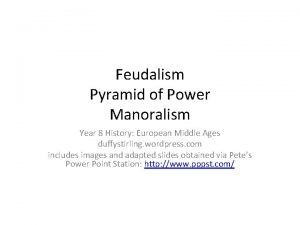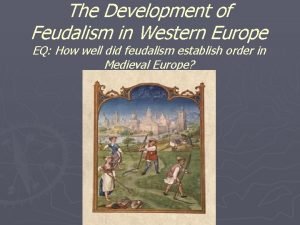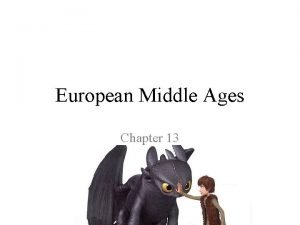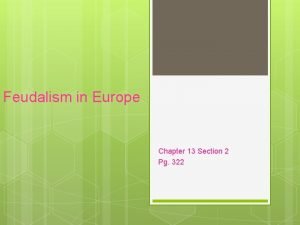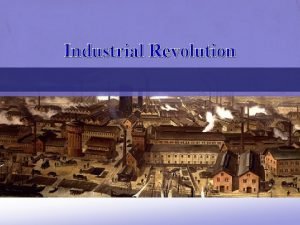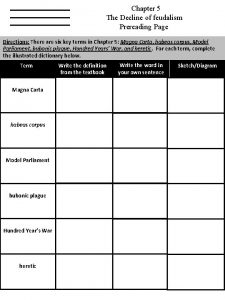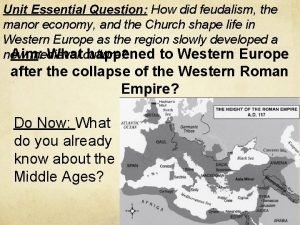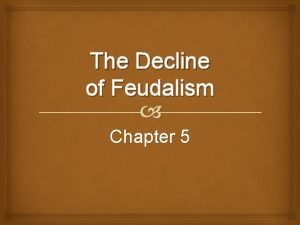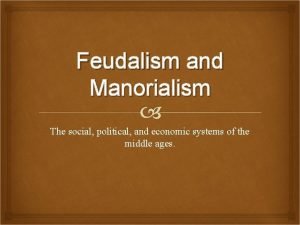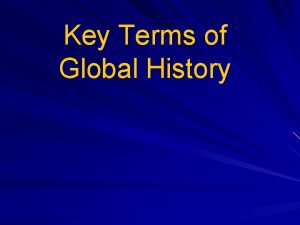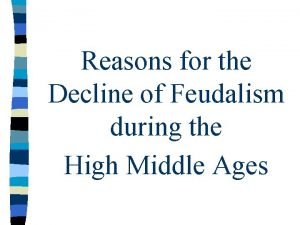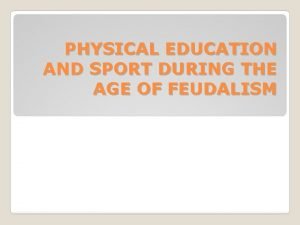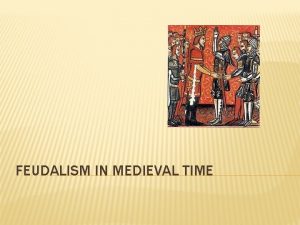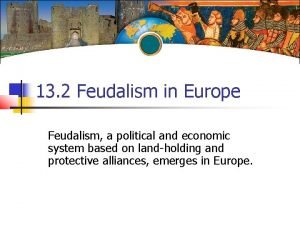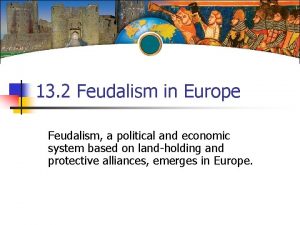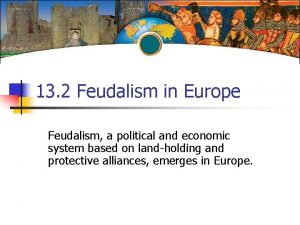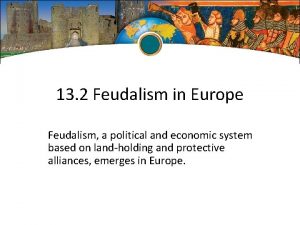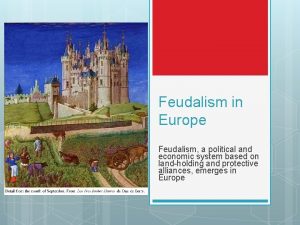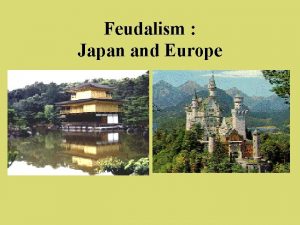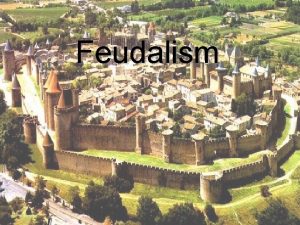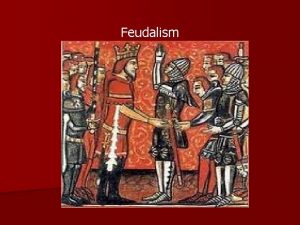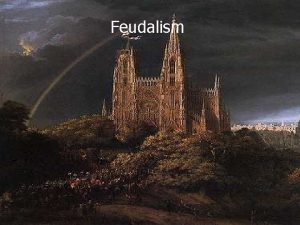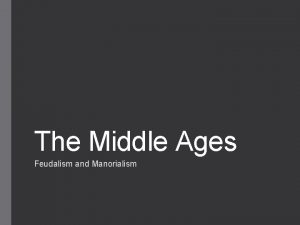13 2 Feudalism in Europe Feudalism a political












- Slides: 12

13. 2 Feudalism in Europe Feudalism, a political and economic system based on land-holding and protective alliances, emerges in Europe.

Invaders Attack Western Europe n The Vikings Invade from the North Warlike Vikings raid Europe from Scandinavia—Denmark, Norway, Sweden n Viking long ships sail in shallow water, allowing raids inland n Eventually, many Vikings adopt Christianity and become farmers n

A sketch of a Viking longboat

Invaders Attack Western Europe n Magyars and Muslims Attack from the East and South n n n Magyars (Hungarian nomads) invade western Europe in late 800 s Muslims strike north from Africa, attacking through Italy and Spain Viking, Magyar, Muslim invasions cause widespread disorder, suffering

A New Social Order: Feudalism n Feudalism Structures Society 850 to 950, feudalism emerges— political system based on land control n A lord (landowner) gives fiefs (land grants) in exchange for services n Vassals—people who receive fiefs— become powerful landholders n

A New Social Order: Feudalism n The Feudal Pyramid n n n Power in feudal system much like a pyramid, with king at the top Kings served by nobles who are served by knights; peasants at bottom Knights—horsemen—defend their lord’s land in exchange for fiefs


A New Social Order: Feudalism n Social Classes Are Well Defined n Medieval feudal system classifies people into three social groups n n n those who fight: nobles and knights those who pray: monks, nuns, leaders of the Church those who work: peasants Social class is usually inherited; majority of people are peasants Most peasants are serfs—people lawfully bound to place of birth Serfs aren’t slaves, but what they produce belongs to their lord

Manors: The Economic Side of Feudalism n The Lord’s Estate n n n The lord’s estate, a manor, has an economic system (manor system) Serfs and free peasants maintain the lord’s estate, give grain The lord provides housing, farmland, protection from bandits


Manors: The Economic Side of Feudalism n A Self-Contained World n n Medieval manors include lord’s house, church, workshops, village Manors cover a few square miles of land, are largely self-sufficient

Manors: The Economic Side of Feudalism n The Harshness of Manor Life n n n Peasants pay taxes to use mill and bakery; pay a tithe to priest Tithe—a church tax—is equal to one-tenth of a peasant’s income Serfs live in crowded cottages with dirt floors, straw for beds Daily grind of raising crops, livestock; feeding and clothing family Poor diet, illness, malnutrition make life expectancy 35 years Serfs generally accept their lives as part of God’s plan
 Feudal system pyramid
Feudal system pyramid The development of feudalism in western europe
The development of feudalism in western europe Feudalism in europe chapter 13 section 2
Feudalism in europe chapter 13 section 2 Chapter 13 section 2 feudalism in europe
Chapter 13 section 2 feudalism in europe Cartoon analysis
Cartoon analysis Feudalism 2 guide
Feudalism 2 guide Feudalism pyramid
Feudalism pyramid Feudalism manor
Feudalism manor The decline of feudalism chapter 5 answer key
The decline of feudalism chapter 5 answer key Manorialism
Manorialism Feudalism meaning in english
Feudalism meaning in english Causes for the decline of feudalism
Causes for the decline of feudalism Physical education in feudalism
Physical education in feudalism
